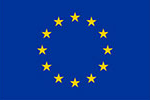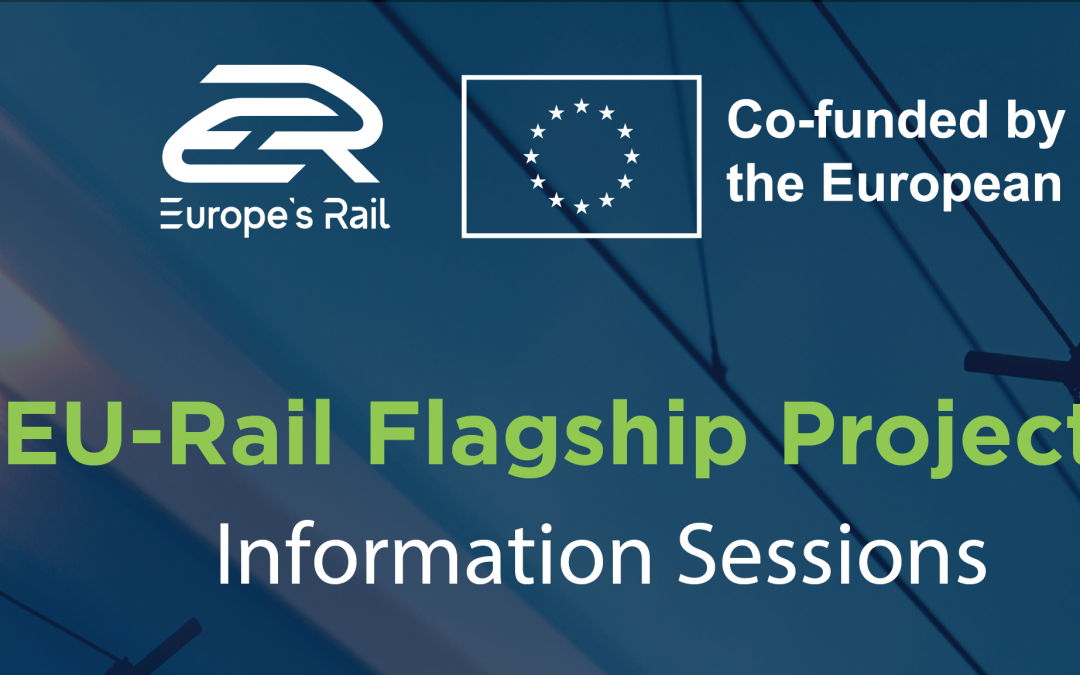How can we build on the progress made so far to make rail travel truly accessible, affordable and reliable for...
Deliverables published by the project
Deliverable D32.2 Recommendations to reduce technical barriers and improve the quality and availability of data
This deliverable, D32.2 “Recommendations to reduce technical barriers and improve the quality and availability of data”, is a critical output of Work Package 32 within the Flagship Project FP5 – TRANS4M-R. It builds upon the foundations laid in the previously submitted deliverable 25.1, which introduced general principles for data sharing and data structures in the rail freight sector. The primary objective of this document is to provide comprehensive recommendations for removing administrative and technical obstacles to data exchange, thereby enhancing data availability and quality across the multimodal freight transport ecosystem. This work is essential for establishing a harmonized framework for seamless data exchange within FP5 and its connection to FP1.Key aspects of this deliverable include:
- Further exploration of the Conceptual Data Model (CDM) introduced in D25.1, emphasizing its role in ensuring data interoperability and quality.
- Analysis of survey results from key stakeholders, including Infrastructure Managers (IMs) and Railway Undertakings (RUs), as well as System Suppliers highlighting current challenges and the state of data exchange in the sector.
- Detailed examination of the roles, responsibilities, and systems involvement of IMs (such as RFI, TRV, and ADIF) and RUs (like ČDC and ÖBB) and system suppliers (like HACON and GTS) in various aspects of railway operations, including planning, traffic control, and data exchange.
- Identification of critical issues in data exchange, such as lack of standardization, cybersecurity concerns, and difficulties in real-time data sharing.
- Discussion on the key aspects that are essential for data sharing such as identity and access management, auditing, monitoring and data sharing policies through a data space approach, as specified by International Data Spaces.
- Recommendations for improving data exchange, focusing on areas such as data governance, standardization, and the adoption of new technologies.
- Discussion on the importance of data quality and availability in optimizing railway operations and improving service quality.
- Coverage of data storage solutions and transversal aspects related to them, including recommendations for good practices in safety, security, and data protection.
- Collection and examination of use cases from WP26 to WP31 to identify areas requiring alignment with WP32 for data exchange purposes.
This deliverable aims to provide a comprehensive framework that will facilitate the seamless and harmonized exchange of data within the broader context of multimodal freight transport. By addressing the identified challenges and implementing the proposed recommendations, the project seeks to drive efficiency, transparency, and collaboration across systems, ultimately leading to optimized logistics, better resource management, and enhanced customer experiences in the rail freight sector. The document reflects the process followed to align data exchange requirements across various work packages, ensuring a cohesive approach to data management and interoperability throughout the FP5-TRANS4M-R project.
Deliverable D25.1 Report on the basic functional and technical specifications for the realisation of the technical enablers of Seamless Freight, also including the final specification input for FP1
The Seamless Freight cluster is part of the TRANS4M-R project and the Europe’s Rail initiative. It aims to deliver an essential contribution towards the modernization, digitalization and harmonization of multimodal rail freight. By addressing various technical enablers identified in the MAWP, Seamless Freight bridges the gaps between actors, countries, systems, processes and transport modes.
Against this background, this Deliverable is the main output of the specification phase and includes the relevant requirements, both functional and non-functional, the main use-cases and use-case environments as well as a description of relevant systems, data types, processes and challenges. These specifications build on the basic requirements identified in the scope of the Deliverables D25.2 and D25.3. The contents of this deliverable are the result of an extensive and iterative process, involving relevant stakeholder groups (IMs, RUs, TOs, YOs, CTOs and shippers) that are all part of the TRANS4M-R team. The specifications are structured according to the different work packages, in which the solutions, that are necessary to fulfil the objectives of Seamless Freight, will be developed.
True seamless planning must result in perfectly consistent planning and allowing for smooth transition and continuity for all actors involved along the entire transport chain as well as all assets required for operating the railway system. Seamless planning therefore encompasses all planning horizons (e.g. long- and short-term as well as real-time), all planning environments (e.g. yards, terminals and all connecting infrastructure) and involves a variety of complex planning systems and processes. All these aspects feed the derivation of requirements for planning systems and their interfaces, with additional consideration of the interconnection to dispatching and keeping the information on line and network capacity updated for all actors, in order to achieve true seamless planning.
Dynamic Dispatching has focussed on the constraints of today, that hinder optimized processes due to lack of real-time information. An intensive exchange with end customers and stakeholders has led to several use cases which shall at an international level prove that harmonization and the dynamic adaption of tasks due to real-time information will lead to higher efficiency and maximizing the use of existing infrastructure. Intermodal Prediction Systems, forecasting both the ETA and the ETD for pre-defined milestones by using advanced machine-learning models, enhance the transparency and reliability of rail freight. The systems use various TAF TSI and EDIGES message types as basis input. Its quality is evaluated using pre-defined TAF TSI KPIs. Main applications for the prediction values are the optimisation of terminal and yard processes as well as the assignment and planning of rolling stock utilization (Asset Warehouse).
The concept of Standardised European Railway Checkpoints is a further development of the previous work carried out in Shift2Rail and the concept of “Intelligent Video Gates” (IVG). The main objective was thus a further development of the previous work. Moreover, in FP3 Checkpoints are also developed but at main lines for both freight and passenger trains. Hence, one main aim was to give a clear and through background description, including existing similar systems that the IMs in T25.4 currently possess. Process descriptions were carried out for three types of operational stops for freight trains; intermodal terminals, marshalling yards and borders. Opportunities for improving these processes though the use of Checkpoints as well as a vast set of use cases were identified. Functional and non-requirements were developed. Based on the process analysis and the defined requirements, technical specifications were outlined for detection technologies and for data sharing. Albeit technical standardisation has been addressed, further work is needed to be carried jointly between the System Pillar sub-project Harmonized European Railway Diagnostics (Herd), FP5 T25.4/WP29 and FP3 WP7. Thus, the specifications outlined in this report will be the basis for a standardised development and installation of Checkpoints within WP29.
Multimodal Integration has focussed on the constraints of today, that hinders simple bookings of freight on rail. Three primary reasons have been identified that will be tackled by use cases. The time-consuming process of finding existing freight train services, the complexity to book services if more than one primary supplying company is involved and the difficulty to establish new services where today’s offering is not yet matching the market demand. All shall demonstrate that harmonized and standardized process and data exchange will lead to higher usage of existing infrastructure due to lowering entry barriers.
All this requires a high degree of collaboration between the involved actors both within and often across national borders. Today, there is a call for better synchronisation within and between transport practices. Big hopes are being placed on digitalisation as an enabler and means for integrated and sustainable performance along the multi-modal supply chain. The primary objective for enabling data exchange is to provide a framework that allows a seamless and harmonised exchange of data. This framework aims to facilitate an increased data availability and quality by reducing technical and administrative barriers for the generation and exchange of data in the project. This framework will be built on existing developments rather than introducing new elements.
Deliverable D27.1 Dynamic Dispatching – Cartography
Overall objective of WP 27 is to identify, coordinate and describe dynamic dispatching requirements and constraints that are specific to last-mile operations in terminals/yards, such as terminal operations, optimized loading and unloading in relation to real-time traffic restrictions and resource availability and constraints, order data management and transfer, dynamic slot management, dynamic task management, digital check-ins of containers/goods, etc. in an harmonised way in order to reduce knowledge barriers for operators and freight forwarders to access any terminal and to share status information in real-time to relevant stakeholders, implement real-time monitoring requirements. The description needs to be coordinated by the joint parties and with strong demand management from the multimodal industry, involving a substantial part of market stakeholders in multimodal freight and in strong alignment with all relevant technical enablers.
This description than formulates the basis of the envisaged implementation of real-time interfaces and the demonstration of their advantages.
14 Partners and affiliate entities have joined their forces with almost 130 Person months of effort, to jointly develop 5 use cases across Europe. All use cases aim to show what a positive effect dynamic information exchange can have in Terminals and Yards. Developments are ongoing for the mock-ups and demonstrators that will reach TRL 4-8.
The 5 use cases are not integrated in one single TOS but rather show the various best practices and shall demonstrate benefits. The interaction in between the different use cases to even further increase benefits are envisaged to be elaborated with in the second wave.
Especially the continuous customer and stakeholder engagement is encouraging us, indicating that we are on the right track.
But the use cases have also the objective to highlight current boundaries, that could not yet be tackled. Most of these boundaries are less technical issues rather than data availability and especially commercial constraints.
Deliverable D2.3 Reference Freight System Architecture
Rail freight transport faces significant challenges like asset utilization, poor data quality or complex processes. To cope with these challenges, changes are required. Automatization and digitalization play a crucial role in enhancing the competitiveness of rail freight. The vision of future freight transport involves an intelligent system that interconnects various stakeholders, processes, and technologies. However, due to the close interdependence in European rail freight transport and since the full digital freight train (FDFT) and its ecosystem is not compatible with today’s systems, only a harmonized approach on European level will be successful.
To tackle these challenges, the project Flagship Project FP5 – TRANS4M-R was initiated. TRANS4M-R is a consortium project that is part of Europe’s Rail Joint Undertaking (ERJU) and is funded within Flagship Area 5 with a duration from 2022 to 2026. The project aims to boost innovation for the European rail freight sector, concretely by developing, validating, and demonstrating TRANS4M-R technical enablers.
This document constitutes Deliverable 2.3 Reference Freight System Architecture of ERJU Flagship Area 5 project FP5 TRANS4M-R and is aimed at providing an overall functional reference freight system architecture by combining different subsystems into one. For FP5 – TRANS4M-R, these subsystems comprise the FDFT, yard automation systems, innovative freight assets as well as seamless operation. The developed architecture describes the target of full automation of the freight sector, as well as a subset based on the agreed technical enablers in TRANS4M-R.
The reference freight system architecture is compiled by the different partners of this task 2.3. Complementary to the work packages involved, this work focuses on the interfaces of the different subsystems, their interaction, and the resulting impacts on the overall systems. Accordingly, the level of detail presented within this document is on an aggregated level. For details on the subsystem architectures please refer to the deliverables of the respective work packages (WP3, WP4, WP5, WP6-WP12, WP25, WP26-WP31). The alignment process of WP2 on the reference freight system architecture is described in the methodology section of this document.
According to its delivery date early in the project, the aim of this report is to describe and define an overall architecture that is highly modular to leave enough space for future developments within the course of TRANS4M-R. The interfaces between the different subsystems are defined accordingly and the overall architecture is described at a high level. The architecture needs to be detailed out in upcoming deliverables of the different subsystems. This report therefore does not describe a fully detailed overall architecture.
The developed architecture provides an important basis for further collaboration on the development of an automatized and digitalized freight rail operation, especially within FP5-TRANS4M-R. In the further course of FP5-TRANS4M-R, the reference architecture will be applied enabling its further refinement in FP5 TRANS4M-R. Lead by the interoperability and modularity principles, further adjustments, and enhancements at later stages of the migration, i.e., roll-out scenarios, will be possible. The functional reference freight system architectures will serve as foundation for authorisation of FDFTO, Seamless Freight vision and yard automation technologies and procedures. In addition to this deliverable, the architecture will be provided as a separate model for better usability.
Deliverable D2.2 FDFTO User Requirements Specification
This document constitutes deliverable D2.2 “User-Requirements” of EU-Rail Flagship Area 5 project FP5 TRANS4M-R. The project aims to boost innovation for the European rail freight sector, concretely by developing, validating, and demonstrating FP5- TRANS4M-R technical enablers. The reports results from task 2.4: Functional requirements.
The primary objective of this document is to provide the functional User-Requirements that are needed to perform the processes described in deliverable D2.1 “Preliminary Operational Procedures”. These requirements form the foundation for innovation development across WP3-WP12.
To derive the functional requirements from the operational procedures in chapter 6 – Elaboration of Requirements a methodology was developed that ensures the completeness and allows iterations including other WPs and expert groups. Polarion is the tool that is used within FP5 for requirements management in general. Therefore, all User-Requirements are created, developed, evaluated, and approved within this tool. Moreover, experts from various WPs were involved and decisions would be documented transparently and fully traceable. The developed methodology enables system and subsystem requirements that are to be developed in other WPs at different timelines to link to the User-Requirements and form relations.
The scope and delimitations of this document are stated in chapter 7 – General Assumptions & Premises. As the base of the elaborated User-Requirements are the Operational Procedures in D2.1, the restrictions stated there are also valid for this document. Within D2.1 the target Operational Procedures are used as reference to derive the User-Requirements from them.
In addition, further influencing factors were identified in chapter 8 which require the definition of further User-Requirements by other WPs or expert groups. These must be taken into account in a future overall consideration of the functional requirements of the FDFT system. Beyond the task description, non-functional User-Requirements and requirements resulting from other influencing factors are partly included in this deliverable when indicated without claim of completeness.
The results are to be found as User-Requirements and User-Features that are hierarchically and thematically related to each other. Items resulting from the operational procedures are divided into cluster that describe the following topics: System in General, DAC System, Power System, Data System and Brake System. They can be found in chapter 9 – User-Requirements.
The results represent the current state of discussions within FP5 TRANS4M-R based on the Target Operational Procedures. The currently elaborated User-Requirements state a work in progress that still needs to be consolidated and verified within the evaluation and verification/validation process in Polarion. Due to continuous development within the requirements management process in Polarion, future releases of D2.1, or other developments within the project it is intended that these requirements are subject to possible changes in further development and will most likely be adapted in the future. Consequently, this document will then be updated and updated versions will be published.
Deliverable 5.2 Technical Specifications of Wagon and Locomotive DAC up to Level 5 (V2)
This document outlines the functional and where needed the mechanical requirements needed for an interoperable design of the Digital Automatic Coupler for freight. The document covers both DAC and Hybrid DAC/Hook couplers to be used in the rail freight segment. The requirements are trying to strike a balance between mechanical and functional requirements, which allows for future innovation and development within the given area.
The document was compiled by using existing peer reviewed standards and the input from technical experts from the main suppliers of automatic couplers within the European Union and from operators and owners of rail vehicles. The draft document was reviewed in open sessions within the FA5 to gather inputs from all stake holders.
The method of verification of the requirements set out in this document are to be found in FP5-TRANS4M-R Deliverable 5.3 – Validation/Test Procedures of Wagon and Locomotive DAC up to Level 5.
Deliverable 5.5 Requirements Specification Yard Automation
This deliverable represents the report of the project results from FP5-TRANS4M-R on yard automation requirements. In detail, it includes:
- Stakeholder analysis document, Operational concept with use cases
- System architecture description
- Catalogue of trackside technical requirements for shunting (e.g. automated stationary brake tests, stationary parking brake functions and solutions for decoupling on the hump)
- Catalogue of technical requirements for automated shunting movement without ETCS (radio control, localization, CCS interface)
- Catalogue of required amendments to TAF-TSI (and other standards)
- Interface and protocols specifications (incl. FA2 and FA3 as well as European Railway Checkpoints)
The document originates from the Subproject Yard Automation in FP5-TRANS4M-R (Work Packages 5, 12, 20 and 21). Find all Work Package descriptions here on our project homepage.
D29.1 Technical definition of the standard IVG for checkpoints and related demonstrators
This report will cover the following topics: demonstrator definition and start of development, prioritization of use cases and mitigation of regulatory barriers for harmonized procedures.[Download not found]
FP5-TRANS4M-R D2.1 Preliminary Operational Procedures V2
This document constitutes Deliverable 2.1 Preliminary Operational Procedures of ER JU Flagship Area 5 project FP5-TRANS4M-R. The document reports results from task 2.1 Target operational procedure description. The project aims to boost innovation for the European rail freight sector, concretely by developing, validating and demonstrating FP5-TRANS4M-R technical enablers. The objective of this document is to provide the first agreed throughout Europe target operational procedures for rail freight. The procedures will define the basis for the development of the innovations for WP3-WP12. It describes the target of full automation of the freight sector, as well as a subset based on the agreed technical enablers in FP5-TRANS4M-R. The section Methodology explains how WP2 intensively aligned the various version of the target operational procedures within the project, as well as within the sector. Sections General Assumptions and Premises as well as Definitions lay the foundation to understand the framework under which the processes must be read. At the centre of this document are the Target Operational Procedures, describing unified processes how to operate the Full Digital Freight Train in Europe. The detailed processes are accompanied by detailed process descriptions. These are followed by a special version of the target procedures focusing on the to be delivered technical enablers in FP5-TRANS4M-R.
D3.1 System Requirements Specification FDFT V1.0
This document constitutes “Deliverable 3.1 System Requirements Specification FDFT” of ER JU Flagship Area 5 project FP5-TRANS4M-R. This document reports results from task 3.2 Train reference system architecture.
The objective of this document is to provide the functional system requirements based on the target operational procedures laid down in deliverable 2.1 “Preliminary Operational Procedures” of task 2.1 of ER JU FP5 TRANS4M-R. The functional system architecture will define the basis for the development of the innovations for WP5-WP12. It describes the target of full automation of the freight sector, as well as a subset based on the agreed technical enablers in FP5-TRANS4M-R.
The section Objective / Aim explains how WP3 intensively aligned the various aspects derived from the target operational procedures within the project.
At the centre of this document, are the Functional System Requirements derived from the deliverable 2.1 Preliminary Operational Procedures, describing what is necessary to operate the Fully Digital Freight Train in Europe. The functional requirements are added to the process descriptions as additional attributes, which have been kept unedited for consistency and ease of reading.
The functional requirements are followed by the Functional reference system architecture including an overview as well as the functional blocks required in FDFT traction units and FDFT wagons. To allow un-restrained innovations to be used, when designing the technical enablers in FP5-TRANS4M-R, the document focusses at the pure functional requirements, wherever possible.
D3.2 Physical reference system architecture FDFT
This document constitutes “Deliverable 3.2 Physical reference system architecture FDFT” of ER JU Flagship Area 5 project FP5-TRANS4M-R. This document reports results from Task 3.3: Specification of physical and data reference system architecture.
The objective of this document is to provide the physical reference system architecture and requirements based on deliverable D3.1 Functional system architecture FDFT in conjunction with deliverable D2.2 User requirements of WP2 of ER JU FP5 TRANS4M-R. The physical system architecture will define the basis for the development of the innovations for WP5-WP12. It describes the target of full automation of the freight sector, as well as a subset based on the agreed technical enablers in FP5-TRANS4M-R.
The physical requirements are followed by the Physical reference system architecture including an overview as well as the physical blocks required in FDFT traction units and FDFT wagons. To allow un-restrained innovations to be used, when designing the technical enablers in FP5-TRANS4M-R, the document focusses at the physical requirements in an open way, as much as possible.
D3.3 Digital_Data reference system architecture FDFT
This document constitutes “Deliverable 3.3 Digital/Data reference system architecture FDFT” of ER JU Flagship Area 5 project FP5-TRANS4M-R. This document reports results from task 3.2 FDFT reference system architecture.
The objective of this document is to provide the Digital/Data reference system architecture and requirements based on deliverable D3.1 Functional system architecture FDFT and D3.2 Physical Reference System Architecture, in conjunction with the deliverable D2.2 User requirements of WP2 of ER JU FP5 TRANS4M-R. The Digital/Data reference system architecture will define the basis for the development of the innovations for WP5WP12. It describes the target of full automation of the freight sector, as well as a subset based on the agreed technical enablers in FP5-TRANS4M-R.
The Digital/Data architectural requirements are followed by the Digital/Data reference system architecture including an overview as well as the logical blocks required in FDFT traction units and FDFT wagons. To allow un-restrained innovations to be used, when designing the technical enablers in FP5-TRANS4M-R, the document focusses at the Digital/Data related requirements in an open way, as much as possible.
















